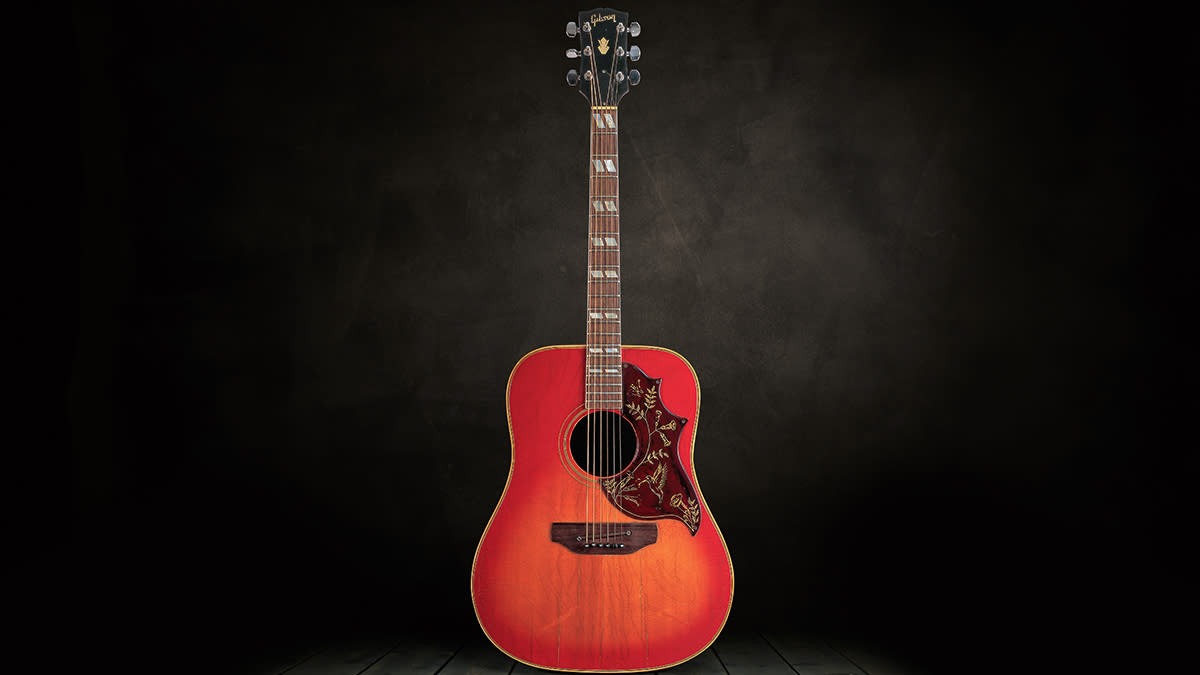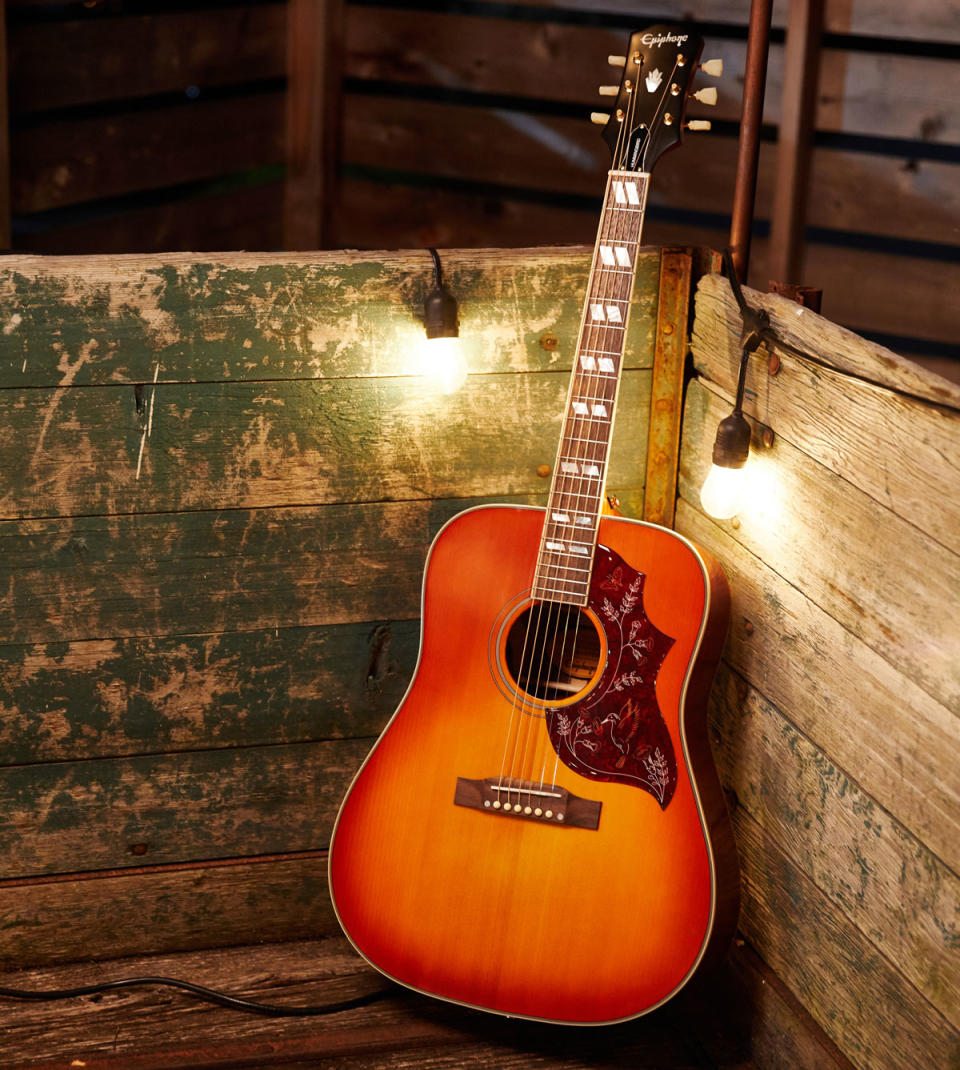The evolution of the Hummingbird: how Gibson’s square-shouldered dreadnought became the acoustic icon it is today

The Hummingbird appeared in 1960 and is regarded as the first Martin-esque square-shouldered Gibson acoustic guitar (as opposed to the classic round-shouldered Jumbo design).
But it wasn’t the first square-shouldered dreadnought/D-style flat-top in production at the company’s Kalamazoo factory: that honor goes to the Epiphone FT-110 Frontier, manufactured from 1958.
After the company was acquired in 1957, Gibson president Ted McCarty drew up a list of suggestions for Epiphone-branded instruments, and the “Flat-top Jumbo – Maple Back and Rim… Copy Martin D’nought size” Frontier he spoke of was one of them. The first Gibson-branded maple-bodied flat-top with square shoulders appeared in 1962 in the form of the Dove.

The evolution of the Gibson Hummingbird, 1960-1984
1960
First shipped; 24.75” scale length; cherry sunburst finish
1962-1963
Some with Dove-style maple bodies and 25.5” scale length
1963
Longer scale retained; natural finish optional
1965
Black-painted neck heel; narrower neck/nut; headstock angle reduced
1967-1968
Screw-on pickguards
1968
Change from top- to bottom-belly bridge
1969
Indian rosewood replaces Brazilian
1971
3-piece mahogany neck; double-x bracing; rectangular inlays; non-adjustable bridge
Mid-'70s
3-piece maple neck; volute; serial number decal
1984
Made in Nashville; return to 1960s-style specs
With fancy appointments – notably, their elaborately engraved pickguards – Doves and Hummingbirds were considered upmarket models and sat near the higher end of the flat-top price list.
Although they shared similarities, such as body dimensions and double-parallelogram fretboard inlays, these ornately decorated acoustics fundamentally differed in construction.
Whereas the longer, 25.5" scale length and maple body of a Dove produced a snappier, more strident tone, the shorter, 24.75" scale length and mahogany body of an early '60s Hummingbird had its own sound.
Gibson attempted to describe it in its catalog: “A fabulous new acoustical guitar – one of the finest ever made for voice accompaniment. The sound is big, and round, and full with the deep rumbly bass so prized by guitar players. There’s plenty of showmanship for the player in its wonderful resonant tone and carrying power, and in its striking beauty, too.”
Notice how Gibson mentions the Hummingbird is for “voice accompaniment” in an effort to appeal to the maestros of the folk-boom era. The American folk music revival was in its heyday and Gibson was responding to demand.
The company shipped 156 Hummingbirds in 1960, followed by 595 and 503 in ’61 and ’62, respectively. In ’63, sales tripled, and 1,364 sunbursts, along with 97 of the newly introduced natural finish guitars, were recorded as shipped. From that point forward, the Hummingbird remained a relatively popular pick from the Gibson catalog and is one of a minority of models that has avoided discontinuation.
Hummingbirds have been spotted in the hands of many well-known performers over the years and have enjoyed high-profile exposure as an instrument of choice for some of the biggest names in music.
To see and hear the Hummingbird in action, check out Jean-Luc Godard’s 1968 Rolling Stones movie Sympathy For The Devil. In the film, Keith Richards and Mick Jagger can both be seen playing Hummingbirds while writing and recording at London’s Olympic Studios. For another great example, watch Thom Yorke’s live solo performance of The Clock from The Henry Rollins Show.
Far-reaching in its appeal and a staple of the Gibson catalog throughout the decades, the Hummingbird still proves popular today
Far-reaching in its appeal and a staple of the Gibson catalog throughout the decades, the Hummingbird still proves popular today. In fact, there are several iterations in Gibson’s current lineup.
These include the Modern series Hummingbird Standard and Hummingbird Studio Rosewood; the Original series Hummingbird Original; the Artist series Eric Church Hummingbird Dark; and the Custom Shop 1960 Hummingbird Fixed Bridge, Hummingbird Deluxe, and Hummingbird Custom.
All of the above can be explored over on Gibson's website.

